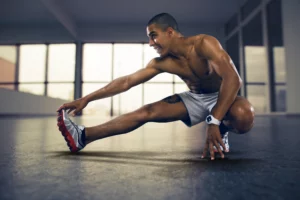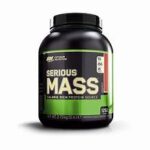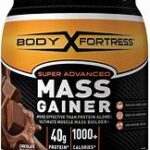A muscle strain is a tear in one of your muscles caused by an accident. They are among the most prevalent injuries, particularly in sports. Strains are divided into three classes based on their severity. The majority of people can heal by resting their muscles and using at-home therapies such as ice and over-the-counter medication. Consult your healthcare provider if you are in pain for several weeks after your injury or have severe symptoms.
There is no distinction between a strained and a pulled muscle. The names are frequently used interchangeably. The same is true for a strained or torn muscle. They both result from the same damage and have the same symptoms and treatments. Overuse can result in muscle strains and hernias, although they are not the same injury. Muscular strains are produced by tears in the muscle fibers. Unless the strain is severe, you can treat it at home with rest, ice, and over-the-counter medication. Hernias occur when one of your internal organs or other bodily parts ruptures the muscle or tissue wall that typically maintains it in place. Hernias seldom heal on their own, and you’ll almost certainly need surgery to fix one.
Without adequate treatment, you may suffer from reoccurring injuries or pain and weakening in the muscle while performing daily tasks. It is especially uncomfortable during physical activity and exercise. In some circumstances, surgery may be required to heal a torn muscle rather than a strained one. A doctor will examine your age, type of damage, symptoms, and other variables before recommending surgery. Surgery is usually reserved for severe muscle damage.
Treatment options are determined by the nature and degree of your injury. Anti-inflammatory pain medicines like ibuprofen (Advil) or aspirin can help reduce swelling and pain if needed. Physical therapy may be required as well. Torn or ruptured muscles may necessitate surgery. You and your doctor will go over all surgical and nonsurgical alternatives for muscle repair.
The majority of muscle strains are minor and do not necessitate professional medical attention. Muscle strain treatment involves the proper materials as well as a comfortable area to rest. You may require the following materials: An ice bag, towel, or compression bandage, such as an ACE bandage cushion pain reliever. Depending on the damaged muscle, you may require assistive devices to help stabilize it, especially if it affects one of the limbs. These are some examples: crutches, a sling, a brace, and a wheelchair
All of these gadgets are only transitory if properly treated.
Rest by allowing enough time to recuperate and avoiding physical exertion. This can be beneficial for strained muscles and other problems.
Ice your muscles four to eight times a day for 20 minutes at a time, using cold packs with a barrier between them and your skin.
Apply constant, mild pressure to your muscle to compress it. This reduces swelling and inflammation, both of which are known to slow healing. To minimize swelling, elevate the injury over your heart. While you sleep, lift an affected limb with cushions or other devices.
Bottom line
These strains can be painful and restrict movement in the affected muscle area. Mild to severe strains can be treated at home successfully using ice, heat, and anti-inflammatory drugs. Severe strains or tears may necessitate medical attention. These strains can be painful and restrict movement in the affected muscle area. Mild to severe strains can be treated at home successfully using ice, heat, and anti-inflammatory drugs. Severe strains or tears may necessitate medical attention.










